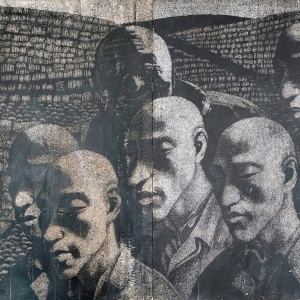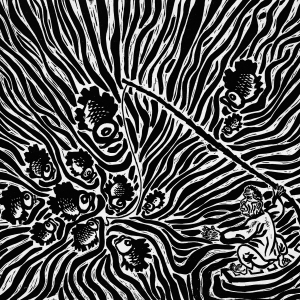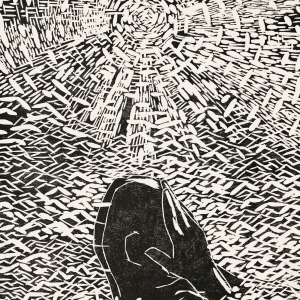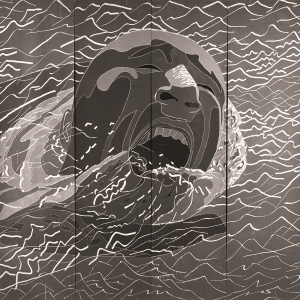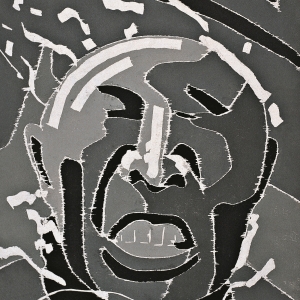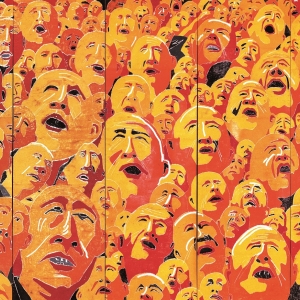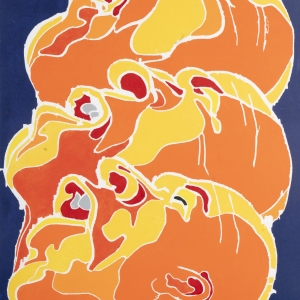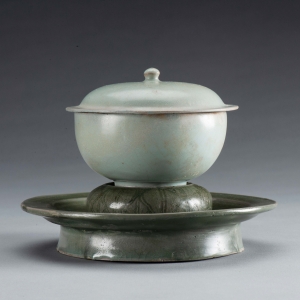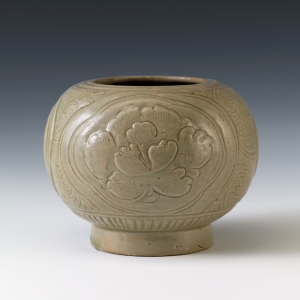馆内

展览介绍
Blossoms in Fairyland-Exhibition of the Taoyuan Embroidery in the Qing Dynasty and the Republic of China Period
Blossoms in Fairyland-Exhibition of the Taoyuan Embroidery in the Qing Dynasty and the Republic of China period is one of “Taoyuan Craftsmanship” series exhibition, which presenting the embroidery works. The series exhibition including embroidery and wood carving two parts is jointly hosted by the Hunan Museum and the Taoyuan County government. It is the first exhibition jointly held by the Hunan Museum and a local government. The series exhibition of “Taoyuan Craftsmanship” starts with the Taoyuan embroidery and wood carving in the Qing Dynasty and the Republic of China period, aiming to reflect the profound Huxiang regional civilization. It is the first work of “Hunan Regional Civilization Series” exhibition held by the Hunan museum.
Blossoms in Fairyland-Exhibition of the Taoyuan Embroidery in the Qing Dynasty and the Republic of China period carefully selected more than 170 pieces (sets) of Taoyuan embroideries from public and private collections in the Qing Dynasty and the Republic of China period. With the visual display of the subjects, patterns, skills, techniques and functions of embroideries, the exhibition aims to accurately interpret Taoyuan embroidery's exquisite skills, profound attainments, unique artistic characteristics and long-standing folk customs and rituals, interpret the unique aesthetic taste of the people in Taoyuan area, and glimpse the industrious wisdom and spiritual pursuit of the people in Hunan Area in the process of creating a better life, so as to help visitors to appreciate the unique charm of Hunan regional culture.

展品欣赏
- 白缎地绣《李白醉酒》戏文故事门檐
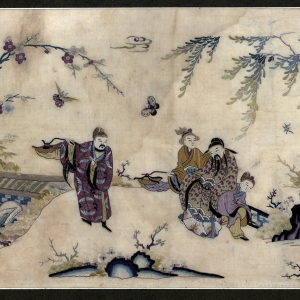
- 黑缎地绣《李白醉酒》戏文故事门檐
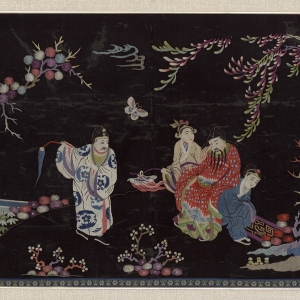
- 白绸地绣花鸟博古纹门檐
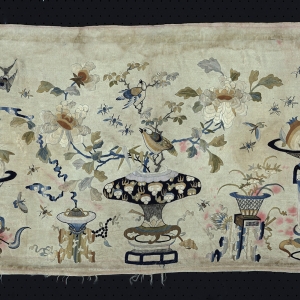
- 白缎地绣“龙凤呈祥”门檐
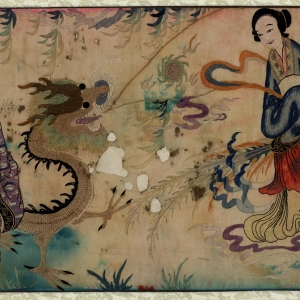
- 白缎地绣“双狮戏球”插屏
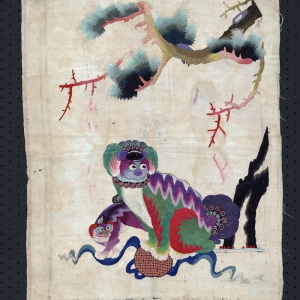
- 红呢地绣“莲塘鸳鸯”帐檐
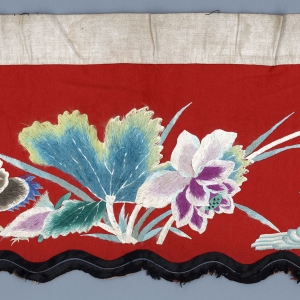
- 白纱地纳纱绣“双狮戏球”门檐
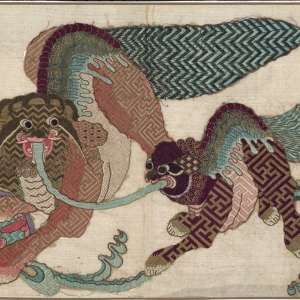
- 蓝缎地盘金绣“孔雀戏花”帘
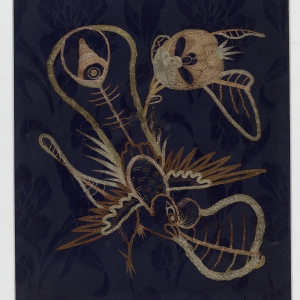
- 蓝缎地绣人物故事纹门檐
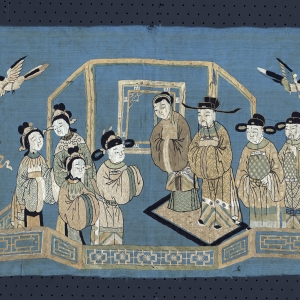
- 紫色洒线地戳纱绣“花间瑞兽”枕顶
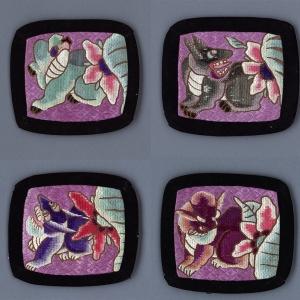
- 紫缎地绣“婴戏图”枕顶
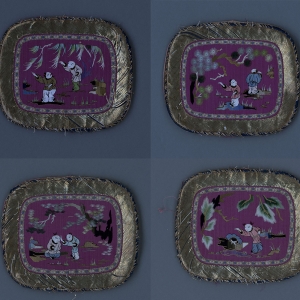
- 清 纵52厘米,横73厘米 私人收藏查看更多
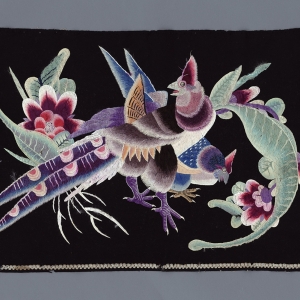
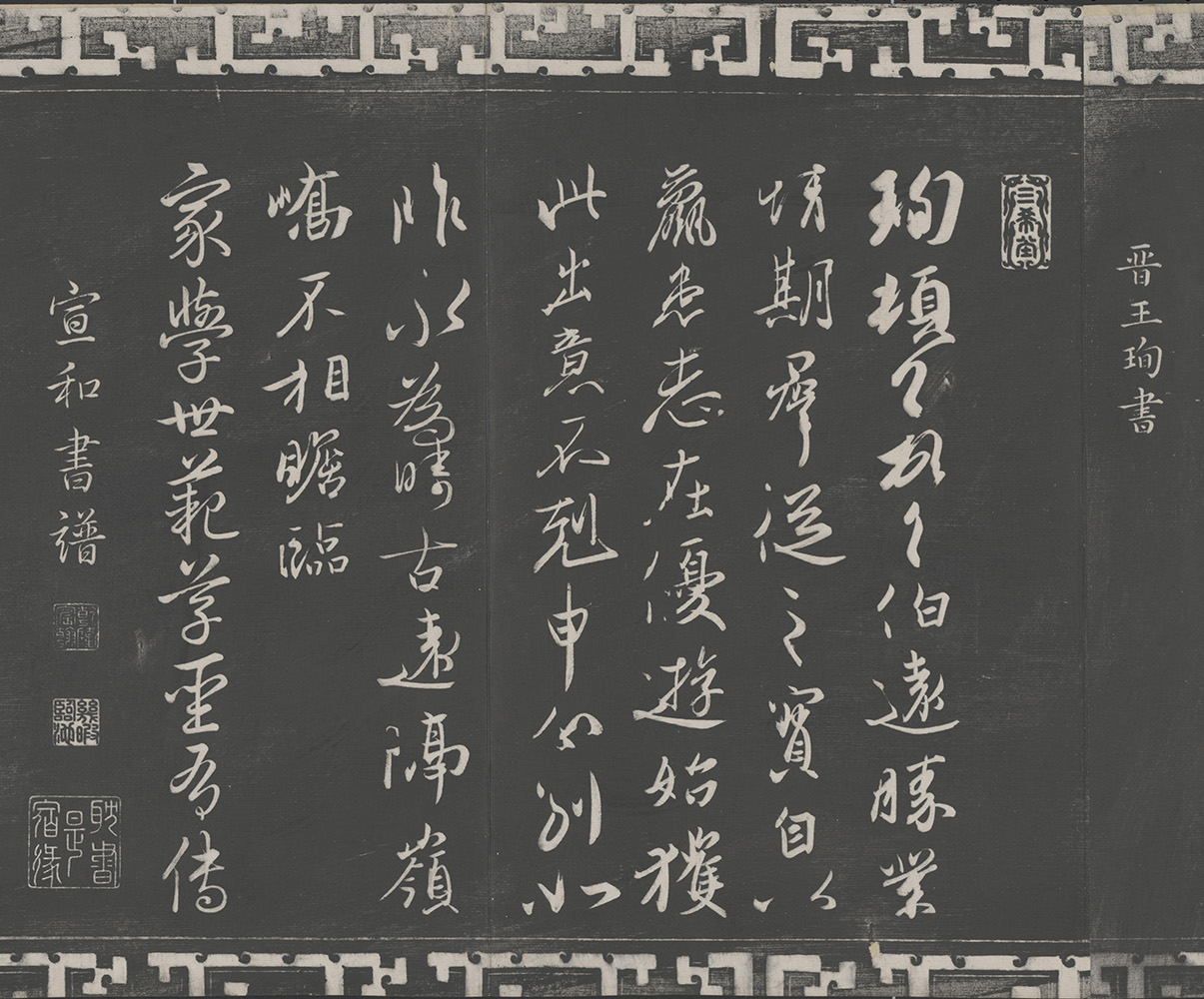
展览介绍
Exhibition of the Sanxitang Shiqubaoji Model Calligraphy
The Sanxitang Model Calligraphy was carved in 1747. Emperor Qianlong ordered officials including Liang Shizheng and Jiang Pu to carefully select from, copy and carve the famous calligraphy works of various dynasties in Shiqubaoji, which took them 7 years. The model calligraphy got its name because it contains Emperor Qianlong's three favorite calligraphy works – A Sunny Scene After a Quick Snow by Wang Xizhi, Mid-Autumn by Wang Xianzhi and Letter to Boyuan by Wang Xianzhi – all of them were collected in Sanxitang, the West Warm Room of Yangxin Hall. After the Sanxitang Model Calligraphy was engraved, Emperor Qianlong specially built Yuegulou Building in Beihai Park to store these stone carvings. He also entitled “Yan Yun Jin Tai” (calligraphy of different forms) and a seven-character poem, which shows how much they were treasured.
The Sanxitang Model Calligraphy contains works from the Wei and Jin dynasties to the end of the Ming Dynasty, including almost all the excellent calligraphy scripts in the Ming Dynasty, such as Tingyunguantie and Yugangzhaitie. Some of the original scripts have been destroyed or lost, such as Zhong Yao’s Jianjizhibiao, Wang Xianzhi’s Songlitie, and Zhao Mengfu’s Wanshanfu. Fortunately, with the Sanxitang Model Calligraphy, we can see the copies of them.
With numerous volumes, strict selections, excellent carving copies and large scales, the Sanxitang Model Calligraphy is of great historical, artistic and academic value. With a collection of works from 135 masters, 340 pieces of calligraphy, more than 200 prefaces and postscripts, over 1600 seals, 32 classifications, 495 pieces of stone carvings and more than 90,000 characters of inscriptions, it is one of the best calligraphy stone carvings.
Hunan Museum has a rich collection of paintings, calligraphy and inscriptions. At the beginning of the new year, we carefully selected the collection of the Sanxitang Model Calligraphy series and planned this exhibition for visitors, from whom valuable suggestions are welcomed.

展品欣赏
- 清末民初拓 弘历 书 三希堂石渠宝笈法帖序
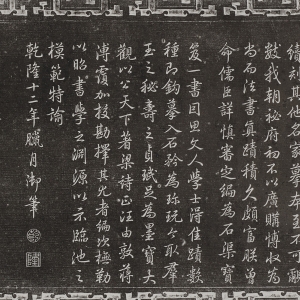
- 清末民初拓 弘历 书 三希堂石渠宝笈法帖诗跋《阅古楼》
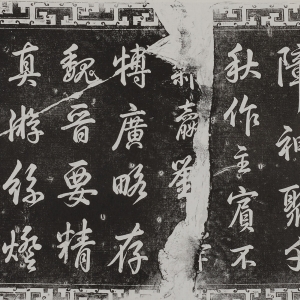
- 晋•王羲之 书《快雪时晴帖》
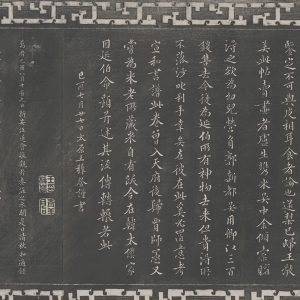
- 晋·王羲之 书《行穰帖》
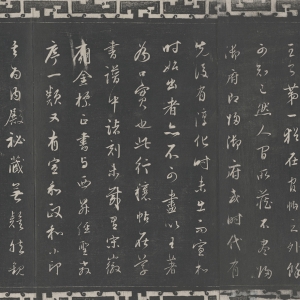
- 晋·王羲之 书《游目帖》
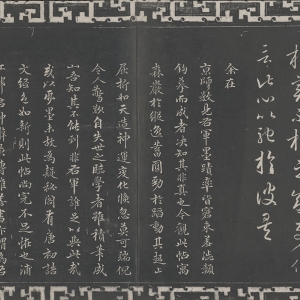
- 晋·王羲之 书《瞻近帖》

- 晋·王献之 书《中秋帖》

- 唐·孙过庭 书《书谱》
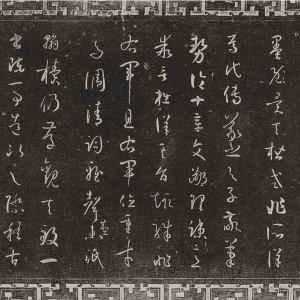
- 唐·怀素 书《论书帖》

- 宋·赵构 书《洛神赋》
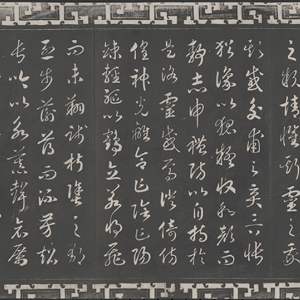
- 宋·苏轼 书《黄州寒食诗帖》
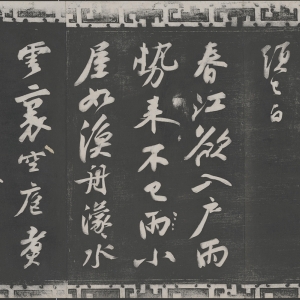
- 宋·黄庭坚 书《花气诗》查看更多
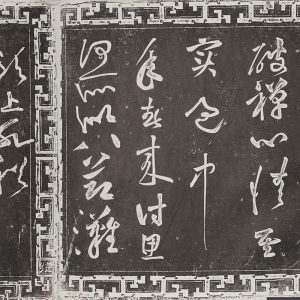

展览介绍
Figure paintings and culture integration in the Ming and Qing Dynasties
Confucianism, Taoism and Buddhism are regarded as three complementary knowledge systems and cultural sources of Chinese traditional culture. From the Pre-Qin Period to the Han Dynasty, they have developed from mutual exclusion into absorption, and then into the overall integration while moving towards unity via continuous historical interactions. Later, during the Ming and Qing Dynasties, the Three Teachings integrated their philosophies in material forms when keeping respective traditions alive. The integration was best manifested by the popularity of figure paintings, statues, sculptures, and literary images. As interrelated visual cultures, the artworks serve as an overview of the important historical features of social culture, aesthetic taste, as well as the secularized and normalized spiritual life in the Ming and Qing Dynasties. Rooted deep in history like “cultural genes”, they have influenced China and even the whole Oriental culture in a universal and profound way.
Chinese people believe that “The sea receives all rivers; Utmost wit listens to all sides”. As we can see, in the Ming and Qing Dynasties, Confucianism, Taoism and Buddhism’s maintenance of relative independence and the state of confluence is also made possible by their pursuit of openness, inclusiveness, and harmonious coexistence. Meanwhile, the internal transcendence embodied in the integration and development of the Three Teachings endows Chinese culture with a character of seeking self-innovation and being in tune with the times, which has become the cultural code for it to grow and prosper for thousands of years. It is hoped that this exhibition can provide people with an opportunity to look back on the cultural origin of the Chinese nation and explore the contemporary value of outstanding traditional culture, thus separating the wheat from the chaff and making the past serve the present. With this in mind, we can build a social consensus on and inject spiritual momentum for developing Chinese culture and practicing socialist core values.

展品欣赏
- 孔子像
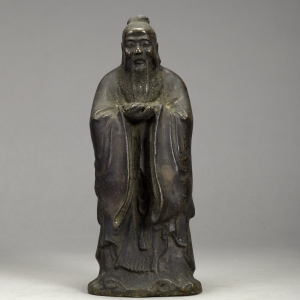
- 常遇春画像轴
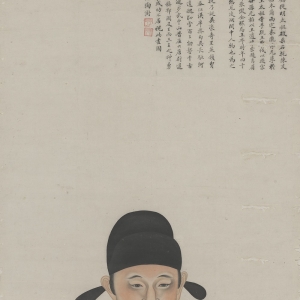
- 吴儁绘何蝯叟顾祠春禊图
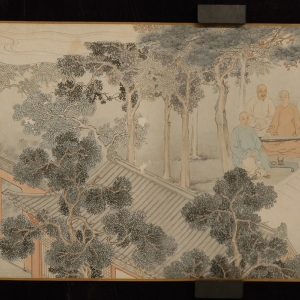
- 五品文官像
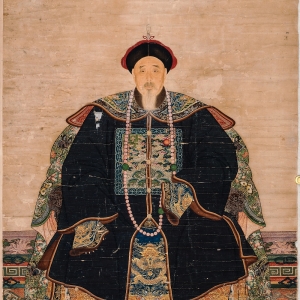
- 阅武图
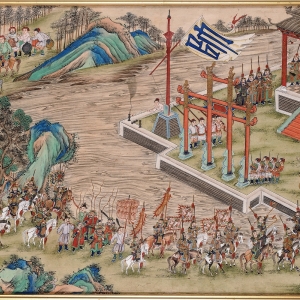
- 吴伟绘松下读书图
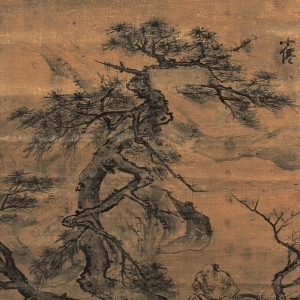
- 仇英绘枫溪垂钓图
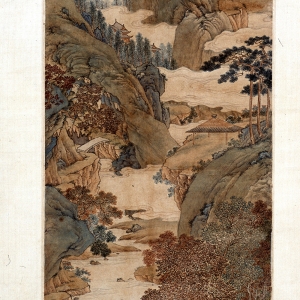
- 禹之鼎绘春耕草堂图卷
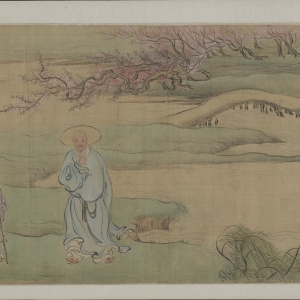
- 如山绘秋林读画图
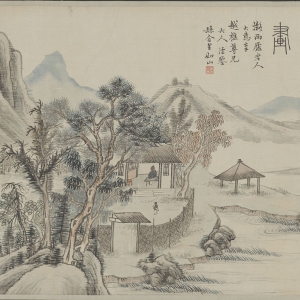
- 郭氏家族十人像
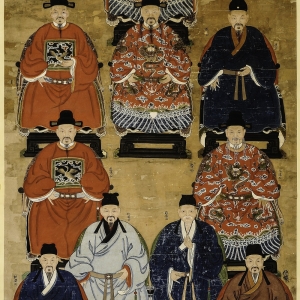
- 李氏祖先群像
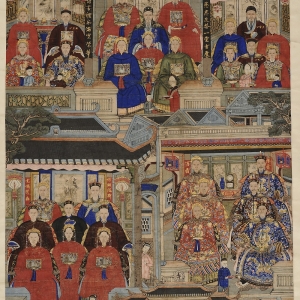
- 清光绪二十五年(1899年) 木刻 272x90厘米 长沙市大观仓艺术博物馆藏查看更多
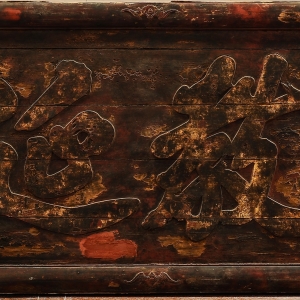
参观指南
Visiting Guide
Full-price ticket: RMB 50 per person
Concession ticket: RMB 25 per person (full-time undergraduate students and below, people aged 60-65 years old and low-income households enjoy price concessions with valid documents)
Free admission: Children under 14 years old, elderly people over 65 years old, persons with disabilities, military personnel in active service and retired military cadres with valid documents
Date: March, 26th-June, 18th, 2021
Opening hours: 9:00-17:00 every Tuesday to Sunday (last entry at 16:00)
Closed on Mondays, except for public holidays
Venue: No.2 Special Exhibition Hall (1F)
Tel:0731-84415833, 0731-84475933

展览介绍
醉·湘西——山水人文影像展
沈从文说,“人生实在是一本书,內容复杂,分量沉重,值得翻到个人所能翻到的最后一页,而且必须慢慢的翻。”
湘西亦如是。
湘西地区,也称“大湘西”,在地理范围上包括湘西州、张家界市、怀化市和邵阳市、永州市的部分地区。
湘西多山,奇峰竞秀、气势磅礴的武陵山由西南向东北贯穿湘西,位于中国二、三阶梯边界的雪峰山与武陵山争雄斗奇,一起化为湘西的筋骨。
湘西多水,水能切山,沅水、澧水、酉河被一群群山峰阻挡,它们切开岩层而来,冲出一处处险滩,像章鱼张开触手,深入这片土地的每一个角落。水是湘西的血脉。
湘西山水共同塑造的喀斯特地貌、丹霞地貌,是这片土地独有的美态。
湘西是地理湘西,更是文化湘西。
湘西境内居住着土家、苗、汉、回等民族,湘西文化是一种多元共生的文化。土家族、苗族是能歌善舞的民族,有各自独特的语言、习俗、服饰、建筑、音乐、舞蹈等等。
“不易了解,值得了解”。
1938年,沈从文在《湘西》中说起湘西的民俗时,写下了这八个字。
湘西越是难以了解,人们就越想了解。
2020年9月,中国国家地理·国酒地理和酒鬼酒邀约作家和摄影师采风湘西。循着沈从文先生1934年回乡路,以摄影的美学艺术,追寻先生笔下湘西今昔变化。并在此基础上联合策划出版了《重走大师路—沈从文笔下湘西的百年变迁》一书。
采风湘西,余音未绝。
为了更生动的呈现书中的精彩篇章,更好地传播湘西人文与自然的独特魅力,更好地宣传和推广湘西文化、湖湘文化和湖湘精神。特举办以“醉·湘西”为主题的山水人文影像展。共展出54件摄影作品、4组非物质文化遗产实物作品和1组彩绘艺术品,分为“观山河·见天地”、“知人文·重传承”、“品变迁·寻见证”三个单元,分别从“自然”、“人文”、“变迁”三个角度,全方位的展示湘西之美。其中变迁部分采用新老照片对比的形式,直观呈现今昔对比,展现湘西的百年变迁,让人们既能体会到古意,又能感受到湘西的新气象,以及湘西与国家民族命运的交融和共振。
本次展览特设互动体验区,可以现场体验年画印制和手绘创作,为自己亲手制作一份独一无二的湘西纪念,把湘西带回家。

展品欣赏
- 观山湘西 摄影/姚本荣
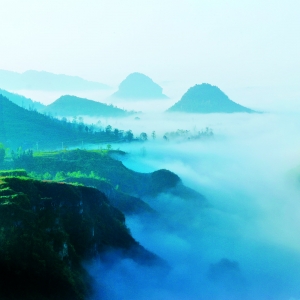
- 雪峰山——一山划开了神秘与喧嚣 摄影/曾文贵、王彤
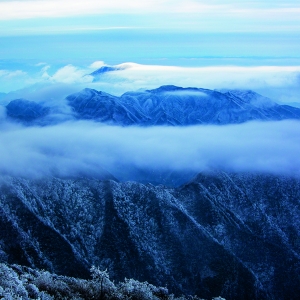
- 武陵山——中国生态绿心 摄影/王芳
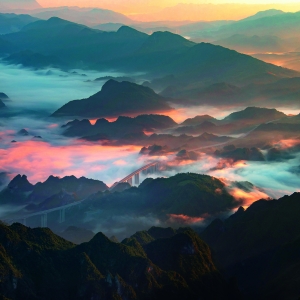
- 张家界武陵源 珙桐花 摄影/孙建华
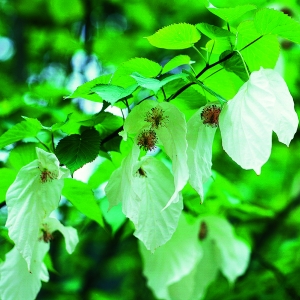
- 龙虾花 摄影/孙建华
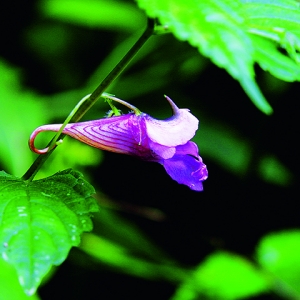
- 岩溶台地——喀斯特的华美“舞台” 摄影/雷勇
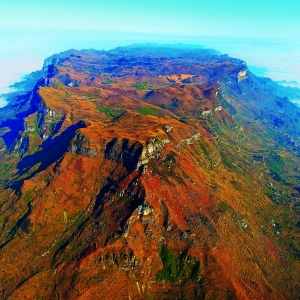
- 问河湘西 摄影/李锋
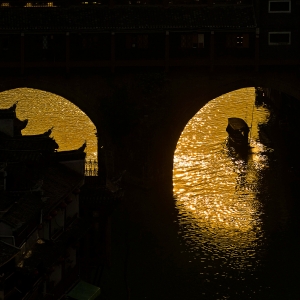
- 岩溶峡谷 摄影/王芳
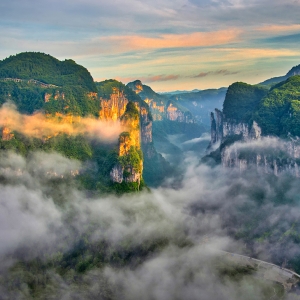
- 沅水——串起众多“ 边城 ”的千里长河 摄影/李永生
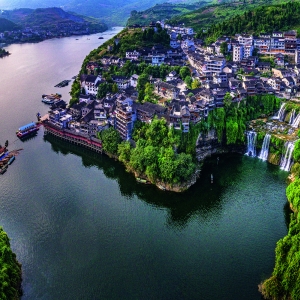
- 黔阳古城 摄影/刘振军
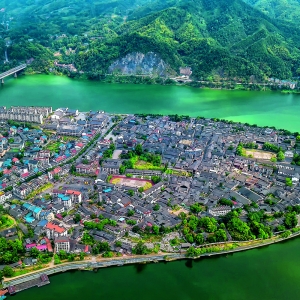
- 酉水·酒河 摄影/田仁斌

- 澧水——灿烂的古文化在这里孕育 摄影/熊宗喜、王彤查看更多
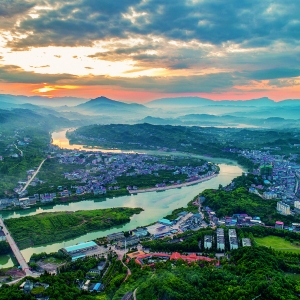

展览介绍
Fang Lijun’s Woodcuts
In order to meet the increasingly growing spiritual demand of people and fulfill the social responsibility as a large history and art museum, the Hunan Museum is now planning a series of modern and contemporary art exhibitions,highlighting different genres of artifacts and revealing profound history of cultures, finally form a comprehensive exhibition system.
The exhibition of Fang Lijun Woodcuts adopts the case study approach and is based on the timeline of works. It well reflects the artistic exploration of Fang at different stages through 132 pieces of woodcuts ranging from the initial one made in 1982 to the lately completed one in 2020. This exhibition is not only a review of Fang’s works over the past 38 years, but also a supreme epitome of development process of contemporary art as well as the growth stages of artists in contemporary China. Fang’s works are divided into 4 phases: 1.vagueness (1982-1984), 2.silence(1985-1994), 3.awakening(1995-1998), 4. breakthrough(1999-today). Although woodcuts are the very beginning of his art career and the origin of his inspiration, his relevant works are much less known to the public than his oil paintings, which are regarded as a symbolic expression in Chinese contemporary art. This exhibition will make up for it and enable us to have an all-rounded understanding about Fang’s artistic achievements.
Fang’s works cover oil paintings, woodcuts, ink and wash paintings, art installations and ceramic works etc, some of which have already become cultural symbols with connotation of certain age and have gained international influence. His woodcuts featuring big structure, huge field and large scale expand the concept and language of woodcuts, highlight the characteristics of things described, revealing an artistic tension and epochal significance via visually shocking images and unique way of thinking. Therefore, they well demonstrated the global perspective as well as the sense of responsibility of Chinese contemporary artists in promoting cultures.


展览介绍
众流归海——明清时期的人物图像与文化融合
在中华传统文化主体结构中,儒、道、释是三种互补共生的知识体系和文化源流。自先秦至汉滥觞以来,它们从彼此的排斥冲突到相互的吸纳渗透,再到整体的融会贯通,在持续的历史互动中走向多元一体的发展格局。明清时期,儒、道、释在延续各自传统的同时,实现了三家在内涵和物质形态上的融合,其中以各种人物画、造像、雕刻及文学图像的流行尤为明显。这些具有内在关联性的视觉文化,形象地勾勒了明清时期社会文化、审美趣味与精神生活世俗化、日常化的重要历史特征。它们像“文化基因”一样根植于历史深处,对中国乃至整个东方文化产生了普遍而深刻的影响。
“海纳百川,有容乃大”,明清时期儒道释三家既保持自身相对的独立性,又达到了三家合流的境界,就在于它们对于开放包容、和谐共生之道的追求。同时,儒道释三家融通发展所体现的内在超越性,赋予了中华文化一种自我革新、与时俱进的优秀品格,成为其数千年生生不息、历久弥新、发展壮大的文化密码。我们希望通过本次展览,共同回望中华民族的文化本源,思考优秀传统文化的当代价值,做到去芜存菁,古为今用,为实现中华文化新的创造和生长,积极践行社会主义核心价值观,凝聚社会共识,提供精神动力。

展品欣赏
- 孔子像

- 常遇春画像轴

- 吴儁绘何蝯叟顾祠春禊图

- 五品文官像

- 阅武图

- 吴伟绘松下读书图

- 仇英绘枫溪垂钓图

- 禹之鼎绘春耕草堂图卷

- 如山绘秋林读画图

- 郭氏家族十人像

- 李氏祖先群像

- 清光绪二十五年(1899年) 木刻 272x90厘米 长沙市大观仓艺术博物馆藏查看更多

参观指南
全 价 票:50元/人
优 惠 票:25元/人(全日制大学本科及以下在校学生、60周岁至65周岁、低保户凭有效证件享受优惠价格)
免票对象:14周岁以下儿童,65周岁以上老人、残疾人、现役军人、军队离退休干部凭有效证件可免费参观
展出日期:2021年03月18日——6月18日
开放时间:每周二至周日9:00——17:00(16:00停止入馆) 每周一为闭馆日,逢法定节假日顺延
展出地址:湖南省博物馆一楼特展二厅 咨询热线:0731——84415833、84475933

展览介绍
仙境有花开——清代民国时期桃源刺绣展
“仙境有花开——清代民国时期桃源刺绣展”是“桃源工”系列展之刺绣篇。“桃源工”系列展由我馆与桃源县人民政府联合举办,分刺绣篇和木雕篇两个篇章先后推出,是我馆与地方政府的首个联合办展。“桃源工”系列展以清代民国时期的桃源刺绣和桃源木雕为切入点,旨在反映深厚的湖湘区域文明,是我馆“湖南区域文明系列”展览的开篇之作。“仙境有花开——清代民国时期桃源刺绣展”遴选170余件(套)公私收藏的清代民国时期桃源刺绣,通过对其题材造型、绣技特点及绣品功用等视觉化的展示,力求精准诠释桃源刺绣深厚的绣技造诣、独有的美术特质和由来已久的桃源刺绣民俗和礼仪,解析桃源这方土地上民众独特的审美情趣,管窥湖湘地域人民在创造美好生活进程中的勤劳智慧与精神追求,进而领略湖湘地域文化的独特魅力。

展品欣赏
- 白缎地绣《李白醉酒》戏文故事门檐

- 黑缎地绣《李白醉酒》戏文故事门檐

- 白绸地绣花鸟博古纹门檐

- 白缎地绣“龙凤呈祥”门檐

- 白缎地绣“双狮戏球”插屏

- 红呢地绣“莲塘鸳鸯”帐檐

- 白纱地纳纱绣“双狮戏球”门檐

- 蓝缎地盘金绣“孔雀戏花”帘

- 蓝缎地绣人物故事纹门檐

- 紫色洒线地戳纱绣“花间瑞兽”枕顶

- 紫缎地绣“婴戏图”枕顶

- 清 纵52厘米,横73厘米 私人收藏查看更多


展览介绍
方力钧版画
湖南省博物馆为不断满足人民群众日益增长的精神文化需求,高度契合大型历史艺术博物馆的定位,彰显文史,荟萃艺术。以期通过研究和策划一系列的现当代艺术展览,逐步实现贯通古今的现代化展陈体系。
“方力钧版画”展以时间为基本脉络,采用个案研究的方式,通过梳理方力钧1982年首次创作的版画至2020年的新作,借助132件不同时期的版画作品,来反映方力钧在不同阶段的艺术探索。此次展览不仅仅是方力钧从事版画创作38年的阶段性成果,也是一窥中国当代艺术发展史和研究中国当代艺术家群体成长史,所极具典型化的一个缩影。策展人按照时间顺序,将方力钧的版画作品划分为四个转折时期:一、朦胧期(1982—1984)二、沉寂期(1985—1994)三、觉醒期(1995—1998)四、突破期(1999年至今)。方力钧的艺术之路始于版画,版画创作思维是他一切艺术形式的本源。但是,人们所熟知的却是他作为当代艺术符号化的油画作品。相信通过此次展览的举办,我们可以对方力钧的个人艺术成就有更加深入的了解。
方力钧的艺术创作形式多样,涉及油画、版画、水墨、装置、陶艺等,部分作品已凝结成具有象征时代特征的文化符号,并引领中国当代艺术走向国际舞台。他的版画以大结构、大场域、大制作的形式,拓宽了中国传统版画的概念和语言,凸显了艺术本体的个性、张力及时代图示,画面充满了令人震撼的视觉冲击力和独特的思维方式,展现了中国当代艺术家所具有的国际视野与文化担当。


展览介绍
烟云尽态 ——《三希堂石渠宝笈法帖》展
《三希堂法帖》始刻于乾隆十二年(1747),是清高宗弘历敕命梁诗正、蒋溥等人历时七年从内府著录于《石渠宝笈》里的历代书法名迹中甄编、摹刻而成。其中收录了珍藏在养心殿西暖阁“三希堂”中的三件乾隆皇帝的“最爱”——王羲之《快雪时晴帖》、王献之《中秋帖》和王珣《伯远帖》,因而得名。帖刻成后,乾隆于北海公园中特建“阅古楼”以储帖石,又题“烟云尽态”四字榜书及七言诗以附之,足见珍视程度。
其所收之帖,上起魏晋,下至晚明,几乎囊括了《停云馆帖》《郁冈斋帖》等明代丛帖内的所有墨迹珍品。一些原迹或毁或失,今天已无法见到,如钟繇《荐季直表》、王献之《送梨帖》、赵孟頫《纨扇赋》等,幸赖此刻“勾魂摄魄”之术,留存“下真迹一等”之貌。
此套法帖卷帙浩繁、鉴选严格、摹刻精良、规模宏大,汇集名家135位、法书340件、题跋200多段、印章1600多枚,分编32卷,刻石495块,镌字9万余个,堪称刻帖之翘楚,乃“艺苑之钜观、墨林之极轨”,具有极高的历史、艺术和学术价值。
湖南省博物馆书画碑帖藏品丰富,不乏珍品。适值岁末年初,我们精心挑选馆藏《三希堂法帖》系列善本,策划本展,以飨观众,尚祈方家教正。

展品欣赏
- 清末民初拓 弘历 书 三希堂石渠宝笈法帖序

- 清末民初拓 弘历 书 三希堂石渠宝笈法帖诗跋《阅古楼》

- 晋•王羲之 书《快雪时晴帖》

- 晋·王羲之 书《行穰帖》

- 晋·王羲之 书《游目帖》

- 晋·王羲之 书《瞻近帖》

- 晋·王献之 书《中秋帖》

- 唐·孙过庭 书《书谱》

- 唐·怀素 书《论书帖》

- 宋·赵构 书《洛神赋》

- 宋·苏轼 书《黄州寒食诗帖》

- 宋·黄庭坚 书《花气诗》查看更多


展览介绍
Enjoy the Elegance at Leisure: the Slow Life of the People in the Song Dynasty
Most of the literati and scholars of the Song Dynasty were well educated in poetry and books, and had the desire to both help the world and be virtuous. The peace and humility in Confucianism, the purity and naturalness in Taoism, and the philosophy of finding one’s true self in Buddhist, enabled them to live with the ease of mind whether in the times of the success or frustration. They did not pursue power and wealth; instead, they valued the taste and entertainment of life while knowing the meaning of their lives.
As senior officials, they would "worry first and enjoy later", displaying their ambition of governing the country and unifying the world; in the face of the ups and downs of life and career, they would "not be pleased by external gains nor saddened by personal losses", but rather, they pursued inner peace. In their spare time, they would relax their mind, indulge themselves in nature and enjoy and contemplate life.
Playing the Guqin and chess, writing and painting, drinking tea and wine, arranging flowers and burning incense, and gathering to appreciate the antiques, as elegant life paradigms and cultural phenomena, have been admired and emulated by generations to come.
The literati and scholars of the Song Dynasty had lived up to our ideal model of life more than a thousand years ago.
展品欣赏
参观指南
Book advance ticket for “Enjoy the Elegance at Leisure: the Slow Pace of Life in the Song Dynasty” here:
Tickets:
Full-price ticket: RMB 50 per person
Concession ticket: RMB 25 per person (full-time undergraduate students and below, people aged 60-65 years old, low income households, enjoy price concessions with valid documents.)
Free admission: Children under 14 years old, elderly people over 65 years old, persons with disabilities, military personnel in active service and retired military cadres with valid documents.
Hours and Location:
Date: Oct, 15th, 2020-Jan, 15th, 2021
Opening hours: 9:00-17:00 every Tuesday to Sunday(admission closes at 16:00)
Closed on Mondays, except for public holidays.
Venue: Special Exhibition Hall, No.2 (1F)
Tel:0731-84415833, 0731-84475933
For more info, please follow our official WeChat account: Hunan Museum (湖南省博物馆)
Getting Here:
Bus Route:
You can take the No.131, No.112, No. 146, No. 150, No.358, No.113, No.901, No.136, No.203 buses.
Metro:
You can take Metro Line 1, get off at Peiyuanqiao Station, exit the station through Exit 2, and then take No.112/ No.222/ No.901 bus to the Hunan Museum.
You can take Metro Line 2, get off at Yingbinlu Station, exit the station through Exit 5, and then take No.131/ No.113/ No.146 bus to the Hunan Museum .







